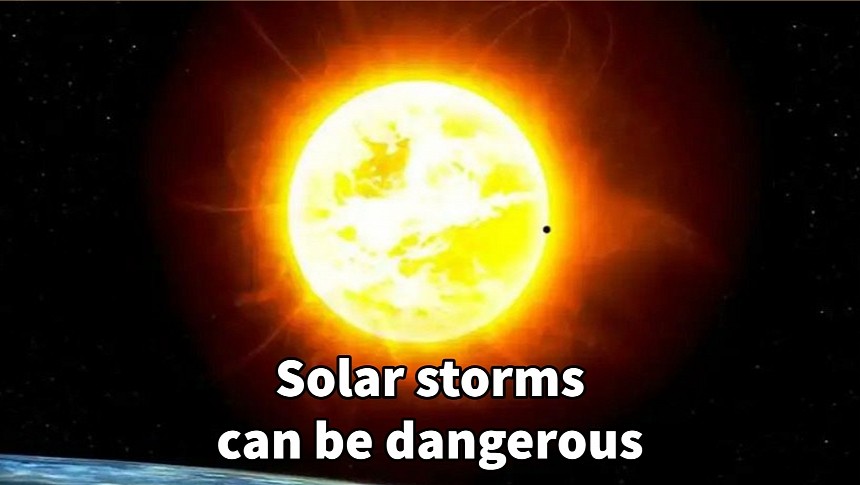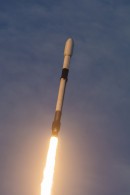The entire G4-7 fleet of Starlink satellites that SpaceX launched on February 3, 2022, was lost after they reentered the atmosphere. NASA found out that a solar storm may have caused the disaster, but also that SpaceX went on with the launch despite knowing the conditions weren't optimal.
Seen from afar, SpaceX has an impressive record, nailing launch after launch with pinpoint precision. The Falcon 9 leaves the launchpad and returns to the funnily named landing barges every single time, while Elon Musk marks the success on Twitter. Much as in space, behind this bright image, darkness lurks, and even Musk was forced to admit that things aren't all rosy. SpaceX CEO made an interesting comment after the first Starlink V2-Mini satellites launched into space were seen losing altitude. "Some sats will be deorbited, others will be tested thoroughly before raising altitude above Space Station."
Since then, observers have noticed that, out of the 21 satellites launched on February 27, only three continued orbit raising, with a fourth having a curious path. One has already reentered the atmosphere, while the rest of the fleet is still under control but slowly descending. Musk attributed this less-than-successful launch to the new tech employed with the Starlink V2-Mini satellites. This could be a minor setback with new technology, but another SpaceX launch ended in disaster a year ago.
On February 3, 2022, SpaceX launched the G4-7 fleet of Starlink satellites comprising 49 satellites to an altitude of 130 miles (210 km) above the Earth's surface. Like the G6-1 fleet, the G4-7 started descending, and soon, all satellites were lost after reentering the atmosphere. In the video below, you can watch some of them light up the sky above Puerto Rico. SpaceX explained at the time that a geomagnetic storm impacted the satellites. NASA dug deeper into the details and discovered the satellites were doomed even before launch.
On January 29, 2022, the Sun erupted a massive solar flare, accompanied by a coronal mass ejection. Material from the Sun traveled on the solar wind and arrived around Earth a few days later, just in time for SpaceX's launch. Researchers from NASA Goddard Space Flight Center and the Catholic University of America discovered that this solar storm has caused Starlink satellites to deorbit, so they started digging deeper into its specifics.
According to their findings, the Sun material traveled at around 690 kilometers per second (430 mi/second) as a shock-driving magnetic cloud. It expanded as it traveled and entered Earth's magnetosphere, creating a geomagnetic storm. One of the side effects was increasing the density of the upper atmosphere, where Starlink satellites were deployed, over a short period of time. The denser atmosphere caused a phenomenon called "atmospheric drag." This essentially slows down anything moving through it and heats things up at the same time.
That caused the entire G4-7 fleet to deorbit and burn up as it descended into thicker layers of the atmosphere. It was an expensive space-weather lesson, costing SpaceX millions of dollars. It could've been easily avoided if SpaceX had delayed the launch to account for the ongoing threat. Solar physicists warned about the effects of the geomagnetic storm, but they decided to go on with the launch nevertheless.
Since then, observers have noticed that, out of the 21 satellites launched on February 27, only three continued orbit raising, with a fourth having a curious path. One has already reentered the atmosphere, while the rest of the fleet is still under control but slowly descending. Musk attributed this less-than-successful launch to the new tech employed with the Starlink V2-Mini satellites. This could be a minor setback with new technology, but another SpaceX launch ended in disaster a year ago.
On February 3, 2022, SpaceX launched the G4-7 fleet of Starlink satellites comprising 49 satellites to an altitude of 130 miles (210 km) above the Earth's surface. Like the G6-1 fleet, the G4-7 started descending, and soon, all satellites were lost after reentering the atmosphere. In the video below, you can watch some of them light up the sky above Puerto Rico. SpaceX explained at the time that a geomagnetic storm impacted the satellites. NASA dug deeper into the details and discovered the satellites were doomed even before launch.
On January 29, 2022, the Sun erupted a massive solar flare, accompanied by a coronal mass ejection. Material from the Sun traveled on the solar wind and arrived around Earth a few days later, just in time for SpaceX's launch. Researchers from NASA Goddard Space Flight Center and the Catholic University of America discovered that this solar storm has caused Starlink satellites to deorbit, so they started digging deeper into its specifics.
According to their findings, the Sun material traveled at around 690 kilometers per second (430 mi/second) as a shock-driving magnetic cloud. It expanded as it traveled and entered Earth's magnetosphere, creating a geomagnetic storm. One of the side effects was increasing the density of the upper atmosphere, where Starlink satellites were deployed, over a short period of time. The denser atmosphere caused a phenomenon called "atmospheric drag." This essentially slows down anything moving through it and heats things up at the same time.
That caused the entire G4-7 fleet to deorbit and burn up as it descended into thicker layers of the atmosphere. It was an expensive space-weather lesson, costing SpaceX millions of dollars. It could've been easily avoided if SpaceX had delayed the launch to account for the ongoing threat. Solar physicists warned about the effects of the geomagnetic storm, but they decided to go on with the launch nevertheless.
Update on the Starlink Group 6-1 (V2-Mini prototype) launch: 3 sats (30042, 30051, 30058) continue orbit raising. 30046 thinking about it. 30062 has reentered as reported earlier. Rest continue under control but slowly descending. pic.twitter.com/Jh2ai3RMEm
— Jonathan McDowell (@planet4589) April 9, 2023








